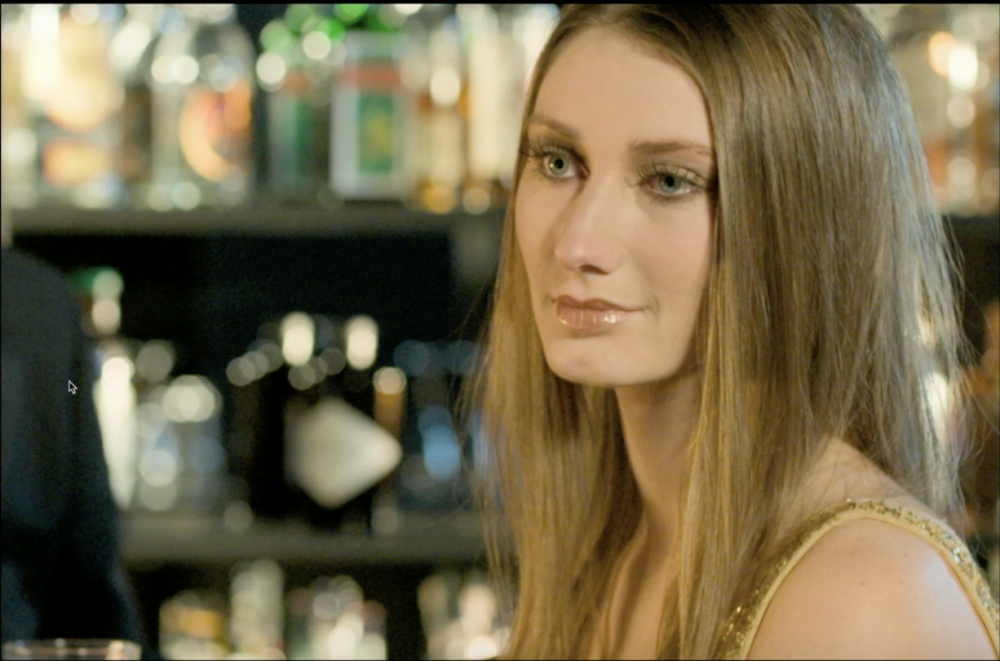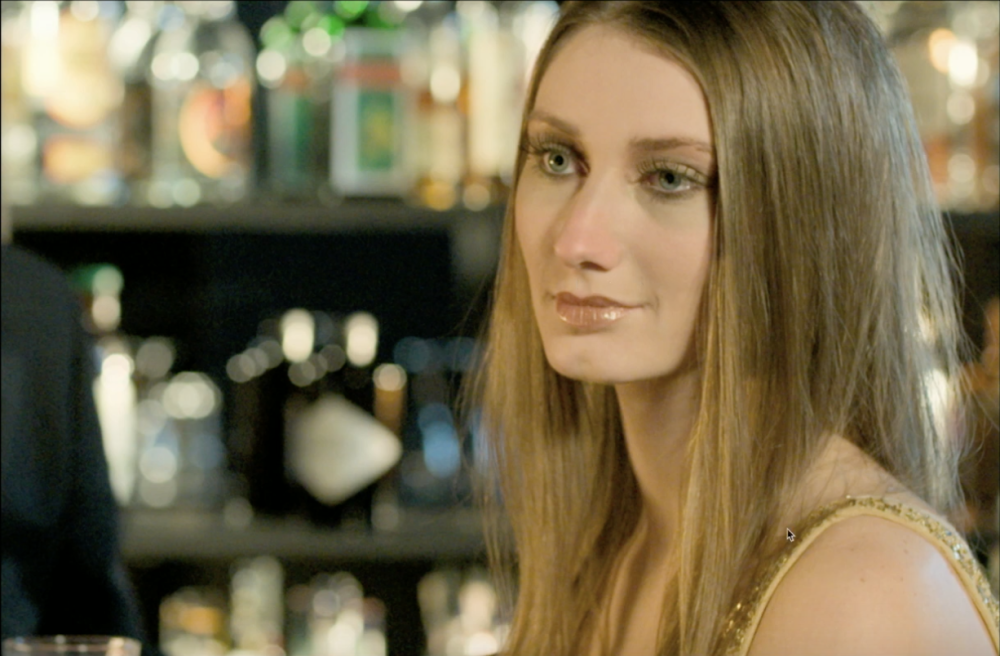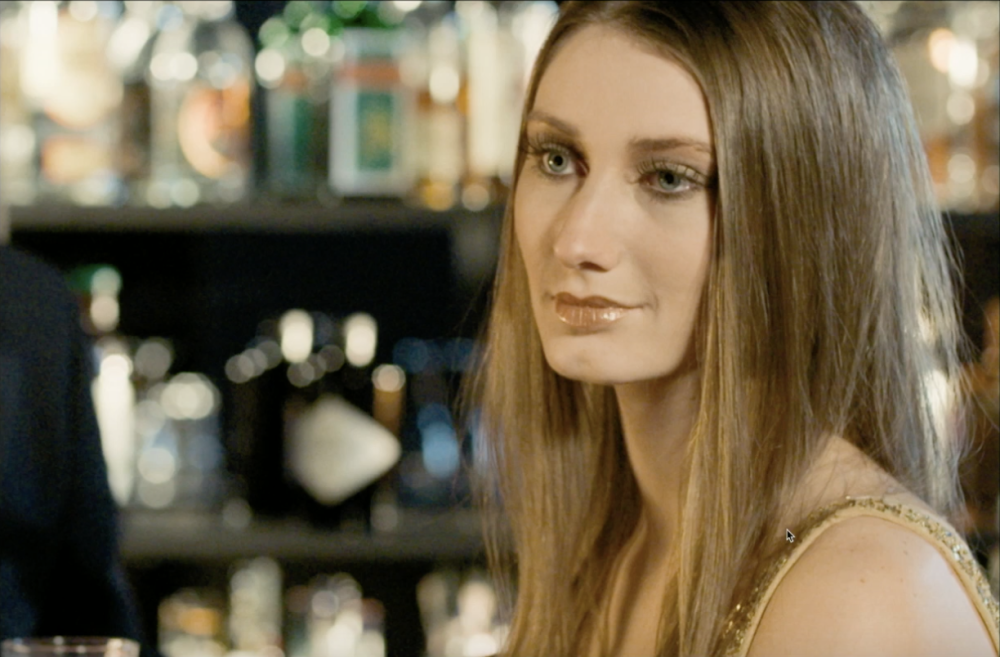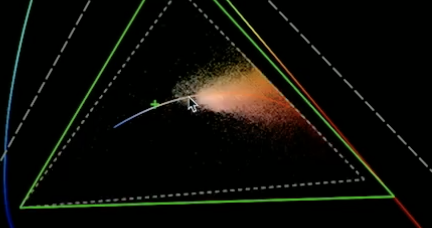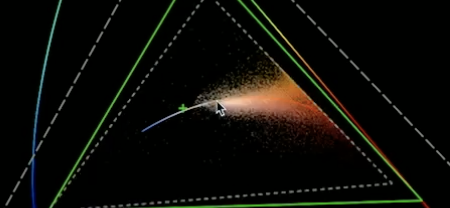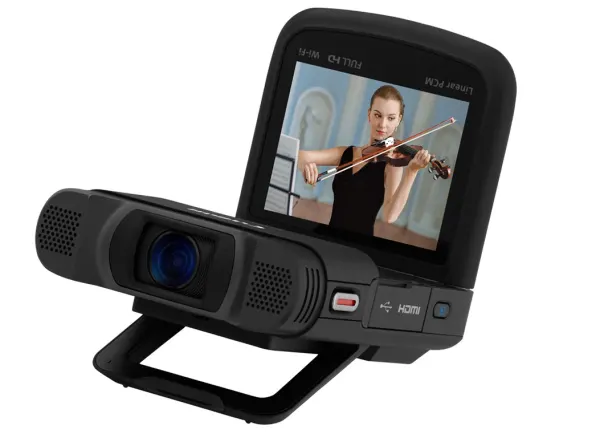-
Posts
7,831 -
Joined
-
Last visited
Content Type
Profiles
Forums
Articles
Everything posted by kye
-
Don't get me wrong, I WANT these things to be good. If they could make a 360 camera that was high-quality enough then it would be useful for filming in very busy situations and you could crop out the interesting moments in post. The issue is that even if they had 27K resolution, the fact they only have 200Mbps means that any crop that isn't an extreme wide angle just isn't good enough. I mean, 12Mbps of h265 is similar to 24Mbps of h264, but seriously... imagine that someone released a camera in 2024 that was 24Mbps! ....and if you want a camera angle tighter than that? You're practically pixel-peeping. I'm not even asking for much - V90 SD cards are common these days and they can write at 720Mbps. Having an EXTREME PRO mode in the camera that has a maxed out bitrate wouldn't be that hard - these things are premium products.
-
The first thing I checked? ....and the last thing I checked. I've posted practically the same thing on every one of these releases, but the principle remains. If you crop in to the image, like 99.99% of shots will be, then the resolution doesn't matter, the bitrate does. 8K at 200Mbps cropped to a 90 degree FOV (about a 24mm lens) is 2K at around 12Mbps.
-
You asked "what brands are you usually happy with color wise?" Good colour in an image is basically skin-tones - get them right and the image is good and get them wrong and nothing else matters. The way to get good skin tones is to film someone with the best skin tones you can find, use makeup to improve the skin-tones in your images, and to colour grade the skin-tones in post. Great skin-tones (and great coloured images) aren't created by cameras - they're created on-set and in post. Trying to choose the right camera to get good colour is like trying to choose the right paint and paint brushes that will make your paintings into masterpieces. You're looking in the wrong place.
-
Vistek just dropped a pretty comprehensive video about how to test lenses, but it includes a bunch of really interesting stuff, ranging from what the various aberrations are, how to test for them, how to see them in the test images, and a range of other factors. He drew heavily from the incredible book The Cine Lens Manual: The Definitive Filmmaker's Guide to Cinema Lenses which is basically the new reference for lenses and has a whopping 836 pages and seems to have come down in price to only $175 or so (it was a lot more previously!)
-
Cam likes the PYXIS...
-
I agree on the focus on the influencer kids. In terms of if Nikon should let RED die, that's a tough call. They could retain the R&D benefits of the RED team (which is likely to have a very very different internal culture to the rest of Nikon and would be best kept separated) but without the RED guys talking directly to folks in Hollywood their ability to do R&D would be drastically reduced. RED definitely are a minor player, but they're not without any contacts.
-
Getting great skin-tones was also a huge focus of film development. Here's a pretty strong example I saw recently (linked to timestamp): In case anyone is allergic to clicking and watching things, if you take this image: and then apply green under her eyes and magenta on her nose it essentially ruins her skin-tones: but guess what - if we apply a film look then those variations in her skin tones that looked awful are mostly eliminated: This is because the film look compresses the green/magenta axis in the image.. before: after: This is a pretty simple colour grading trick. Any half-decent colourist can do this without thinking about it too much, and most LUTs already have this kind of thing built in. Notice that this was all done in post, and didn't rely on the camera at all?
-
I agree that this is a huge market and definitely where Nikon should focus their attention, and an N-line of cameras would be a good way to do that, especially if it took advantage of the tech that RED has. This doesn't really have much to do with RED making products for Hollywood though - that's a different brand making different products for a different market. Mass-market car companies do this all the time. They use their tonnes of cash to buy an unprofitable sports-car company and get their techs to work on making hot hatchback versions of their cars, and perhaps a new premium line of sports cars under the mass-market brand, but they also help the sports-car brand to improve quality control and keep on making new models. They don't just close down the sports-car brand. Virtually all sports-car brands are owned by another manufacturer that makes family cars.
-
This is true. However, people are also trying to share their experience with you. For example, if you said that you were hammering in nails with your camera and it was really damaging the camera and you asked how to make the camera tougher, people would reply telling you to buy a hammer. Is this answering the question? No. Are people trying to help you? Absolutely. You have asked a series of questions over the last month or so about technical aspects of cameras that don't have any relevance to real-world shooting except in very very specific scenarios, and when people reply you haven't given any information suggesting that you actually face these scenarios in your own work, you just seem to want to discuss things like these real-world considerations don't actually exist. For example - do you know what the best ways are to get great skin tones? Shoot someone with great skin tones Shoot someone with good skin tones and good makeup Shoot someone with not terrible skin tones and really good makeup Shoot someone with great makeup Shoot someone with good skin tones and ok makeup and do digital retouching in post Shoot someone with not terrible skin tones and good makeup and do good digital retouching in post Shoot someone with ok makeup and do really great digital retouching in post Notice that the camera didn't factor into that equation? I'm sure that you understand that make-up is a pretty big deal on a movie set, but you might not be aware of how much work goes into skin tones and retouching in post. They say that getting the skin tones right is about half of all colour grading effort. Here's a video showing the state-of-the-art tools that are dedicated to this - these tools wouldn't exist if there wasn't demand for it...... this is the tools in Baselight which is the main Resolve competitor.
-
It does, although as an owner of the current Micro panel I won't be rushing out to buy it. TBH, the panels have a bit of a controversy around them because BM seems to stop short of making them fully-featured. The feedback I hear from colourists is that the Mini is the best one because it has the buttons for controlling OFX plugins etc that the Micro doesn't, but users of both the Mini and Advanced panels frequently say that there are little things that aren't on the panels and BM refuses to make them customisable, so users have to keep a keyboard or mouse or tablet handy on the desk for just one or two frequent operations. In this sense, BM are like Apple - you do things their way and it's take-it-or-leave-it. To a certain degree the lack of customisation on the panels reflects the lack of more advanced features being built into Resolve, which means that people have to put together custom workflows with nodes in strange configurations etc, which of course aren't easily usable from the panels because the panels aren't customisable - even the Advanced panel at ~$28,000. I see quite a number of grading suite setups with a tablet as the main item directly in front of the user, then a panel behind that. Personally, I've tried to colour directly from the panel but the limitations in terms of what Resolve comes with has lead me away from it and to even develop my own custom tools.
-
Are you referring to a specific situation where you shot in 709 and then in LOG but couldn't match the 709 profile when grading the LOG image? I have done quite extensive side-by-side testing and colour matching of my GH5, GX85 and iPhone 12, and I was quite surprised when trying to match the GH5 to the GX85 because I put a CST on the GH5 and the image was almost identical in terms of the colours etc. The GH5 has significantly more DR, and the GX85 isn't even showing all of its DR in its 709 profile, so that was a difference of course, but even matching between two vastly different cameras was very easy. In terms of how different they were from each other, in grading a normal project where I have shots taken outside in uncontrolled conditions the shot-to-shot variance of shots from the same camera was more than the difference between the GH5 LOG and the GX85 709 image.
-
That's what I'm talking about too. My post compared the speed of CFExpress over USB with the speeds of 10G Ethernet.
-
You seem to care about matching cameras....
-
If you're cutting between two cameras that were used to shoot the same scene but from different angles then you'd be surprised at how different they can be without the viewer noticing. This is because: The lighting will be different from the different camera angles The contents of the frame will be different, either subtly or significantly The viewer might (and hold onto your hat here....) be watching the film and not comparing skintones Besides, I said to learn colour grading. If you can't edit two cameras together with skin-tones that are similar enough not to bother viewers, then you haven't learned it enough yet.
-
Absolutely. Of course, ARRI is like the old IBM where you got what you paid for, unlike the modern IBM which is charging for a premium service and just delivering the lowest-cost service they can get away with! I agree. I've seen it in many different industries time and time again from the people who are already successful saying that new people shouldn't be allowed in and that equipment should be expensive and hard to get etc. In the case of the colourist I was referring to, I suspect they got sick of new people coming into the scene wanting to get great images and not wanting to get a job fetching coffee and then spend the next 30 years working their way up through the ranks to get to being a well-regarded colourist.
-
The answer is either putting in the time to learn colour grading, or putting in the time to earn money to buy multiples of the same camera so the image is identical.
-
10G ethernet is only 10Gbit / 1.2GB/s but CFExpress cards can exceed this. This test from Petapixel shows speeds up to 2.8GB/s and most of the models tested exceeded 1.2GB/s. If BM put dual CFExpress cards in the camera then in theory this could double that throughput too. The ethernet standard is designed for maximum throughput with cables up to 100 meters/yards long and the 10G standard for copper was announced in 2006 so it's hardly a new standard, and stuffing data through long cables is an entirely different challenge to transmitting it an inch or two!
-
In my experience, the internet has a very skewed view of which brands offer the best colour science. Millions of folks on the internet will tell you that Canon has the best colour, and recently Fuji is in the game with their film emulation presets, but I think this is just confirmation bias in action. All manufacturers have very high quality colour. Even Sony, who used to have the most "accurate" colour and looked very unappealing, have turned it around and now have pretty nice colour. The other great myth is that great colour comes from the camera, it doesn't. Great colour comes from production design, lighting, and colour grading. Here is a thread where I show that it's the work in post that makes the images pop. After reading your recent posts and threads about one aspect of cameras or other, I have some bad news for you... you can't buy good images. Good images come from skill, not equipment. Great images come from skill and large amounts of hard work.
-
Yep. I think it's a matter of friction across an entire lineup, and if you start with a fixed-lens camera and want to "upgrade" then going to a MILC might seem a huge jump up but if your fixed-lens camera also has LOG then there's an "upgrade" right in front of you. You switch to it, learn about LUTs and colour grading and having flexibility of the image in post. Then when you want to upgrade your home setup (where size doesn't matter) the fact that you're already shooting N-LOG would be a factor in keeping you in the Nikon ecosystem. Yes, we'll see what happens (or doesn't) in time. I guess my thinking was this: RED is a huge amount more than just a patent, therefore When they bought it, they were buying something valuable that they didn't have RED has a bunch of knowledgeable people, a bunch of IP, and recognition and a track record in Hollywood If Nikon keep the RED brand active then they could do a "best-of" situation, where the RED engineers and technology gets implemented across Nikons existing product lines, and the RED brand gets the benefit of Nikons extensive support network and R&D and manufacturing capabilities. This would grow the RED brand in Hollywood and in the cinema camera market, which Nikon has zero market penetration of currently, and would help the Nikon brand in it's more premium products. If Nikon let the RED brand die, then the Nikon line of products can still get the benefits of the RED tech, but any new Nikon products that target the cinema market will essentially untrusted / untested / unknown and apart from "it's got REDRAW in it" they will be a completely new player in this market. One thing I think that might not be well known is that a lot of folks in the "industry" have complete contempt and even hatred of the consumer brands and the entire DSLR revolution. There's a very famous colourist who openly says that putting video into stills cameras was a mistake and they should take it out (yes, he maintains that the manufacturers should all REMOVE the video functions of all these consumer cameras!). There's a thing where at the first production meeting of a movie there's a moment when someone asks what they're shooting on, and if the answer is ARRI / Alexa then everyone in the room relaxes. Yes, this means that if they say RED then people don't relax, but if they say RED then at least someone can say "X, Y, Z were all shot on RED". If someone said "Nikon" at that moment, the reaction might be "the photo people????". When you have industry people actively hating the fact that people are shooting music videos on GH5s, someone like Nikon are likely viewed as being from a parallel universe!
-
Thinking about this more, I think there are three different approaches. The first is to shoot manually and get it perfect every time. Not even the pros do this with completely controlled sets. Colourists say that they're always making small changes to WB on a shot-by-shot basis, even on big budget productions, so this is only mentioned to make sure we understand that we will be dealing with small changes in post. The second is to shoot on a manual WB. This will mean that you're going to get errors in the WB, potentially being quite noticeable, but they're likely to mostly be in the warm/cool Temp direction. The third is to shoot on auto-WB. I've found that, on my Panasonic cameras at least, the WB errors are pretty minor, and the WB is pretty close - even if the lighting is quite variable and I'm taking shots from different angles and in different locations etc. This means that you'll be making only very small corrections, but they could be in the magenta/green Tint axis as well as the warm/cool Temp direction. We're quite sensitive to Tint errors, so this means that adjusting these is a bit more fiddly, and can take some practice, but is perfectly possible. I know that when I shoot I am very likely to completely forget a manually set WB, and will end up shooting a whole evening at 6500K and it'll be so warm it'll look like I shot it through a jar of honey, so I shoot auto-WB and therefore inevitably have to make minor corrections in post but never have to make large ones. Going back to the minor curves that are part of the Look, and how we can't un-do in post because we don't have a complete profile of that camera/look combination, shooting on auto-WB will mean that these get applied to the footage in a place that will likely only be a very small distance from where they should have been if the shot had perfect WB. Obviously this still depends on your camera, the profile, your colour management pipeline, the tools in your software, your skill in applying them, and the weather and position of the stars etc... so this is also something that you would be best testing for yourself too.
-
Good question. I think the fundamental challenge of making corrections in post is having the tool operate in a colour space that matches the footage as closely as possible. For example, if your footage is in Linear, and you have a node in Linear, and you adjust the Gain wheel (which literally applies gain by doing a simple multiplication) then they match exactly and the result will be a perfect exposure or WB change, just like it was done in camera. If you get your colour management pipeline correct then you can get this practically perfect adjustment for LOG footage too. The challenge comes when the camera records in 709. This is mostly because cameras don't just do a CST from Linear to 709, they apply all sorts of "make it look lovely" sort of small tweaks. When we record in the wrong exposure or WB then these tweaks get applied wrongly. For example, the profile might compress the skintones, and do so by expanding the reds and yellows on either side. If you shoot a clip where the skintones are too yellow then your skintones might get expanded rather than compressed. No CST will un-do all these small tweaks, so you're left with an image that's curved in all the wrong places rather than all the right ones. So, what happens in practice is it comes down to the individual profile you choose (which will have its own unique set of tiny curves that make that look) and your own ability to manipulate it using the right combination of tools to get the most pleasing result. My results vary mostly based on the luck that I had when correcting each individual test image - your results will likely suffer the same variance unless you're a far better colourist than I am. I'd suggest you do your own tests. Either find a spot in the shade on a sunny day, or even better is to do it on a cloudy day. Do a manual WB against a grey card (or piece of white copy paper if you don't have a grey card), then just shoot a clip of yourself (or a volunteer model if you can get one 🙂 ). Then shoot a range of test clips setting the Colour Temp manually. Then just pull them all into post and see which tools seem to work the best for you, and which gives you the more pleasing looks. One thing I did notice was that I had trouble getting the blacks and shadows to be right when the skintones were dialled in, with them tending to be the opposite of the original tint on the image (ie, if the image was warm then the correction ended up with cooler shadows) so with everything else being equal that might be a reason to go warmer so you get a bit of colour separation in the final images.
-
Maybe. It would be a bit silly though - the brand recognition was part of the value of the company. BM is having a difficult time breaking into the cinema ecosystem despite having brand recognition for Resolve, so Nikon buying one of the "big three" brands that was being actively used by Hollywood, and then putting it in a drawer seems a bit counter productive.
-
Agreed! That's why I said "MILC cameras with serious video features (like the Z9) all the way down to some select "creator" cameras with fixed lenses (like the G7X or Osmo Pocket 3 etc)". 😁 Your examples make sense, but I'd suggest they don't go far enough into the lowest end, which is why I specifically mentioned fixed-lens models like the G7X and Osmo Pocket. I think you might still have too "industry" a view on what is happening out there. On social media, you can be a "professional" in the sense that you're making serious money, but this doesn't automatically mean you upgrade all your equipment to large/heavy/complicated/manual/technical bricks that have already been assimilated by the Borg. This is what happens on sets, but most social media happens out in the real world, not on a set. The cameras I see out there being used most in vlogging land are the iPhone, the G7X, and the recent trend is for retro cameras. Anything larger than a P&S is referred to as "my big camera". Check out this vlogger who was so excited to buy a Canon Vixia Mini X... This isn't even the first time I've seen a vlogger talk about this camera recently, because they went viral because K-Pop artists were using then for vlogging. Why? It's barely the size of a battery! Also, you can film yourself with the wide angle while also having the screen pointing towards yourself, and it doesn't look like you're secretly filming other people, the sound is good, etc etc. All manufacturers except Apple are completely oblivious to the idea that there's a need for physically small cameras that create a professional grade image. I mean, do you think I'd be shooting with the GX85 and its 8-bit 709 files if there was something that shot LOG in the same form factor?? Be serious! Half of the reason I learned to colour grade so well was to overcome the weaknesses in the image from the small cameras.
-
Hmm.. 10G ethernet isn't that fast I guess, but it's all relative. For example if you're shooting the highest quality setting "12K - 12,288 x 8040 Blackmagic RAW 3:1 - 1,194 MB/s" then you'll only be able to pull it off the camera in real-time, but that's not likely to be a situation that most people would be in. If you were shooting in 8K (Blackmagic RAW 3:1 - 533 MB/s) then you can copy it off in double-speed, or 8K 12:1 and 4K 3:1 (~133MB/s) then you're copying at 9x realtime. Of course, most productions are going to be rolling for a lot less time than they're stopped in-between takes, so the DIT can keep pace with offloading the files off the camera throughout the shoot without having to stop the production to swap out media. It is a pretty low-cost way to protect yourself against camera/media failures where you'd lose the contents of the media. It's like that old backup saying.. Two is One and One is NONE!
-
I think that @Danyyyel makes a good point about the reputation and brand recognition of RED, so I suspect they will keep that in tact. However, a Nikon N-Line is completely possible. The growth of TikTok etc as video-centric platforms is absolutely true, but I don't think that the cameras that RED currently offer are really where the action is. If you want to make a line of cameras that are designed for shooting for social media, I'd imagine that this new N-Line would be: MILC cameras with serious video features (like the Z9) all the way down to some select "creator" cameras with fixed lenses (like the G7X or Osmo Pocket 3 etc) Log // RAW shooting - potentially with REDRAW because why the hell not? That would mean that Nikon would overhaul their own product lines to have better video (assisted by the techs and technology from RED), a new N-Line with video-centric and ease-of-workflow features, and keep RED as the professional cinema line for working professionals. Currently the market seems to have two kinds of cameras - hybrids for amateurs and cine cameras for working pros. The gap is that the market also contains a huge number of "professional content creators" who are working professionals but have completely different needs to the amateurs and also the video professionals, which is why we lament the poor / limited / crippled functionality of the hybrid cameras and also lament the lack of flexibility in the cinema camera product lines.





